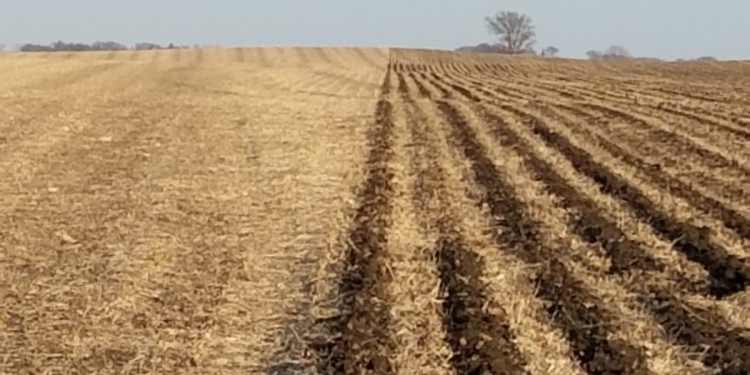Growing potatoes without plowing is good. There even seems to be a small plus financially, say Wageningen researchers.
Does it make sense not to plow the field before putting potatoes on it? Does the yield not fall and what does not plowing do to biodiversity, water management and nitrogen leaching? On the Potato Demo Day, Wageningen researchers Janjo de Haan and Derk van Balen discussed plowing and alternative processing methods on Wednesday.
Van Balen: ‘Plowing is standard tillage. Plows turn the soil and work intensively. According to many, less intensive tillage is better for the soil. We call this reduced tillage and the best known form of this is non-inversion tillage. There is a great variety in reduced tillage systems. Digging can be seen as an intermediate form of turning and non-turning tillage. ‘
Do you have a good crop of potatoes if you don’t plow? De Haan: ‘The research in the system tests of the PPP Beter Soil Management has shown that growing potatoes without plowing, or with reduced tillage, can be done well. It does not entail any additional costs and does not cost any revenue. There even seems to be a small plus for potato cultivation. ‘
Water management
What else does not plowing yield? De Haan: ‘In terms of water regulation and water purification, reduced tillage on clay scores better than plowing. Due to the better structure, the water balance is better and water is removed more easily. No clear effect on structure and water management is visible on sandy soil. ‘
And what does not plowing do to biodiversity? De Haan: ‘Not plowing is demonstrably positive for the biodiversity on clay soil. There we measured more worms, insects and spiders with reduced tillage. These also provide the better structure. We did not perform these kinds of measurements on sand and valley soil. ‘
What are effects on nutrient leaching? Van Balen: ‘There is no effect of reduced tillage on the nutrient surpluses, although reduced tillage appears to have a lower risk of nitrogen leaching on both clay and sand. We are still investigating how this works. ‘
Switch over
Can a farmer switch to reduced tillage just like that? De Haan: ‘No. You have to think carefully about incorporating reduced tillage into your whole way of working. The weed pressure can certainly be significantly higher in the first years. Keeping the soil covered for as long as possible helps suppress weeds. Frost-sensitive green manures are preferred, but sometimes it is still necessary to flap in the spring. To be able to sow into crop residues, special seeders with discs are needed. ‘
Van Balen: ‘Switching to reduced tillage can also have an effect on crop rotation, choice of green manure, weed control strategy and fertilization. For example, in this dry spring we see that the digestion of crop residues starts late. This has consequences for the release of nitrogen. ‘
Better dewatering
And the weather conditions? Van Balen: ‘Thanks to better drainage, we see, especially this year, that the unplowed soil in the subsoil is drier than plowed soil, which is favorable for working in the spring. The top layer is generally more moist than plowed soil, which means that pre-treatment is necessary to allow it to dry before sowing or planting. ‘
The researcher continues: ‘This year we see that the unplowed soil is significantly drier in the arbor than plowed soil, which may have an effect on the final yield. But we experience that the potential of reduced tillage in a changing climate is greater than with plowing. ‘
source: https://www.nieuweoogst.nl/








